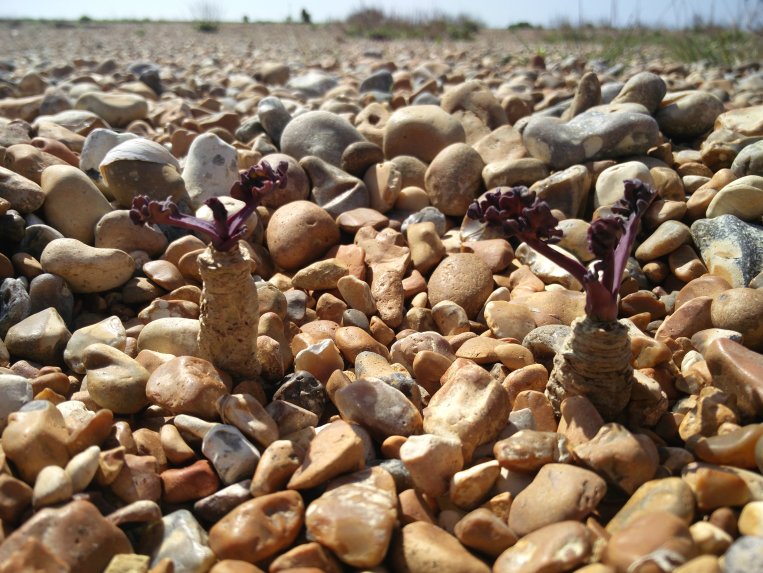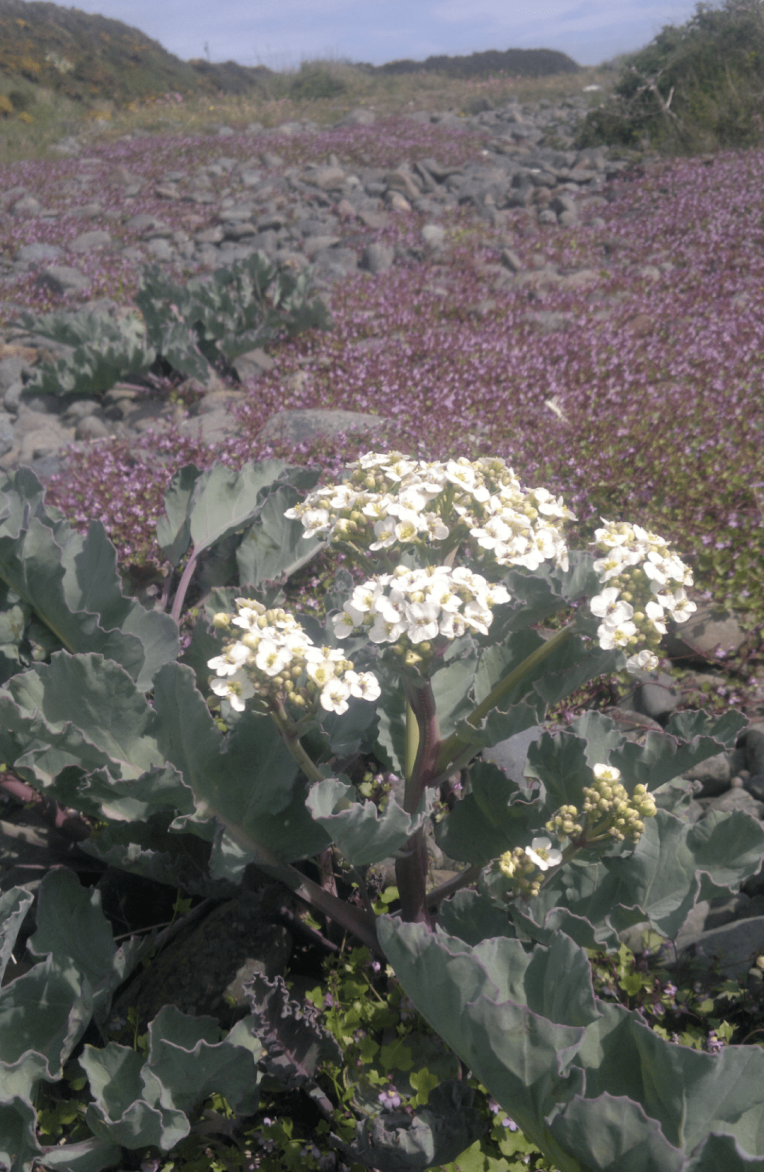WE SEA KALE
I’ve been walking on a lot of beaches recently – and one thing that I’ve found that I think is really fascinating is sea kale. Here’s one – just sprouting through with its little purple leaves:


This is how it starts to grow – sprouting from incredibly sturdy looking stalks.

Sea kale is a native perennial, which favours shingle beaches and those with coarser sands. It’s incredibly rare in Sussex and across the UK, although it is often abundant where it is found. It’s actually protected under the Wildlife & Countryside Act (1981) and must not be picked without permission from the landowner. Its rarity has not been helped by the fact that the Victorians developed a pretty bad habit of digging it up and sticking it in their ornamental gardens. It also hasn’t been helped by the introduction of sea defences along our coastlines or being crushed underfoot by people wandering along the seafront.
This kale was once quite a delicacy. It’s actually edible at every stage of its life – from its purple shoots through to the tiny blossoms (much like purple sprouting broccoli). It then becomes more ‘cabbagey’ when the leaves turn green, and finally, when the little green fruits appear. Don’t pick it though – as mentioned earlier, it’s illegal.

You can purchase seeds though – I would imagine that sea kale would be a great thing to try to grow yourself – they’re pictured above. Once the leaves have died off, the dried pods then replant elsewhere. Clever little things! In the meantime, watch where your feet go next time you’re walking along a shingle beach, you might stand on a sea kale’s head.
Oh, and if this post has made you fancy a bit of kale, why don’t you take a look at ours?

